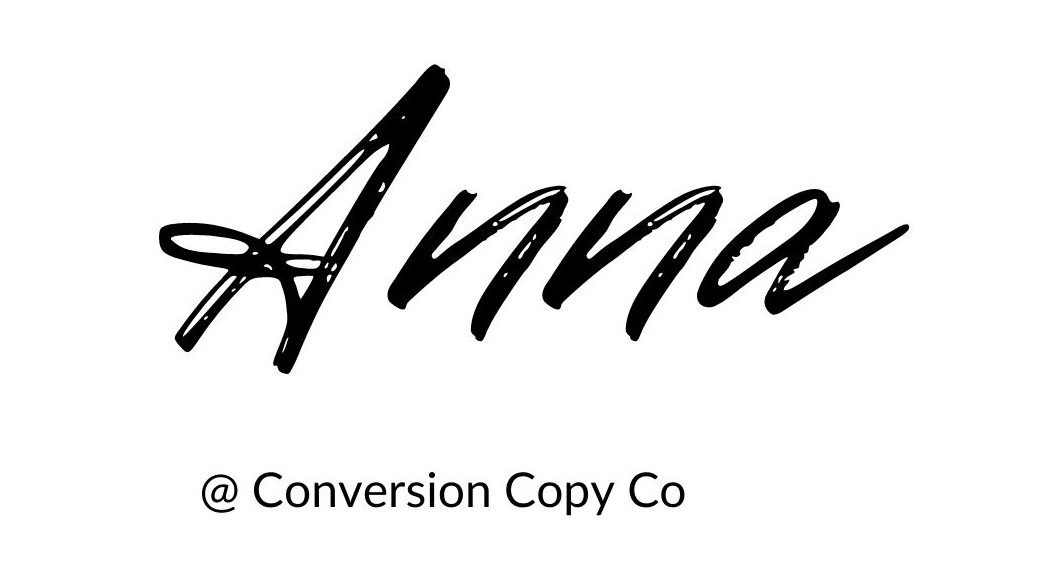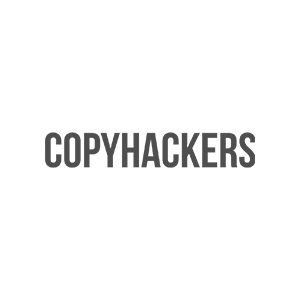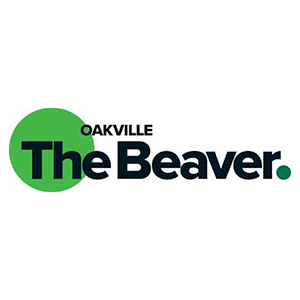
Launching an online course?
Unless you are a master of DIY, you’ll need a team to successfully launch.
And your launch team should include a copywriter. You’ll need a copywriter to write a high-converting course sales page plus the full range of sales funnel marketing assets. (Lead magnets, ads, opt-in pages, emails, thank you pages…)
At what stage should you hire a copywriter for your course launch?
You might be tempted to hire a copywriter first, then figure out the course details.
After all, copywriters are in high demand and you might feel it’s urgent to nail down a commitment.
But before you hire a copywriter, run through this checklist to make sure you’re ready.
Your course sales page copy planning checklist
I’ve worked with many course creators and based on what works and what’s disastrous, I’ve pulled together a checklist:
Everything your copywriter needs to know before writing your course launch copy.
Use this list to guide your own course strategy. Then, use it to brief your copywriter.
Of course, your copywriter still needs to conduct research. (Hint: make sure this is happening.) But their research will be smarter when you hand over this vital information.
1. Who is your ideal course buyer?
Get as specific as possible here on their past experience and level of sophistication. This is essential. Are you selling to beginners, intermediates or advanced students?
Also key: Are you just selling to one buyer, or are you selling to the student and the person who controls the budget?
Lately, I’ve worked on copy for sales pages aimed at career professionals. We had to ask, “Who are we really selling to here? Will the student need approval from their manager or are they paying out of pocket?”
You might be selling to two audiences and that’s tricky.
In one case, I solved this by writing the sales page for the student but writing a PDF business case download. The business case was written to persuade the student’s manager.
2. What is the most important problem your course solves?
For your very specific audience, what problem does your course address?
What made your course audience aware of this problem? Or, in other words, what’s going on in their lives that triggered the realization, “This is a problem in need of a solution”?
The problem you solve can be the actual problem AND the problem with other courses or solutions. (Why these aren’t enough.) We’ll address this below.
First, get clear on what type of problem is the main driver here:
- Financial
- Related to authority/recognition/achievement
- Emotional (relationships, esteem, mental health)
- Spiritual
- Physical
Problems are layered.
You might initially believe your course solves a problem of time…
But beneath that is the financial problem of not being able to generate enough income because work takes too long. Or, the emotional problem of not being able to spend time with family.
Keep asking “why” until you get to what feels like the deepest, most painful problem.
Conversion copywriters are trained in the research that clarifies problems people will pay to solve. But as a course creator, you’ll need to know the answer, too. It’s at the core of creating a product that sells.
3. Why can’t your audience solve this problem with another course?
Even before there were dozens of online courses on every topic, your buyers still had alternative solutions to their problems. If they needed to clean up their diet, they might have hired a nutritionist instead of buying a program.
Today, you have to think about those non-course alternatives…
And you have to know the universe of other courses that could solve the buyer’s problem.
Let your copywriter know what else your buyer might choose. And then let them know the problems with these other courses/solutions.
Why is this course different and better for the ideal audience? Is it more…
- Specialized or niche?
- Up-to-date?
- Interactive/fun/engaging?
- Complete?
- Authoritative?
- Condensed/simple/straightforward?
- Affordable?
Knowing your audience really well will help you land on the best differentiating idea.
If you know your audience is time-pressed, then a condensed course is the winner.
If your ideal course buyer has to be up-to-the-minute, then you know what to say, right?
The persuasive copy on your course sales page hangs together, piece by piece. It’s like a logic puzzle that starts with the audience.
4. What outcome can your course promise?
Thinking about the audience, their problem and what makes your course different, fill in the blanks.
At the end of this course you will be able to _____________?
Check to make sure this is something other courses can’t promise. Or at least, other courses your audience would be aware of.
5. What exactly are the topics or modules, and what problems do they solve?
Do your sales page copywriter a huge favor.
Outline your modules by thinking about each from the lens of problems your audience needs to solve.
There’s the main problem your course solves. And inside there are sub-problems you solve. Each course module solves a sub-problem, in a logical order.
That means for each module, you need to answer the question: What piece of the problem does this module solve and why does it matter to my buyer?
Defining each module in terms of problem-solution is so key, I can’t stress it enough. And it’s not only essential for sales copy that converts. Thinking this way also helps you get clear on a structure for your course.
6. What’s inside each course module and bonus?
Your course can include any number of learning resources:
- Recorded video training
- Live training (recorded or not)
- Templates, tools, workbooks
- Swipe files
- Community (e.g. a group)
- Help desk hours
- Private or group coaching
- Review/feedback of students’ work
- Tests and certification
Your copywriter needs to know what’s ‘inside the box’ to write the sales page.
For each of these components, finish the sentence, “You get ________ so you can (insert desirable outcome)”.
Buyers want to feel like an online course is tangible. Help them get clear on the inclusions and why each is so attractive.
What about bonuses?
Bonuses are useful for increasing urgency in a course launch or as upgrades. We’ll talk about each of these factors briefly below.
The most premium bonuses are exclusive and tied to time with you, the course creator. Think: coaching.
Swipe files can be very attractive bonuses for some audiences. And unlike your time, they’re infinitely scalable.
Is a swipe file bonus right for your course? Maybe, if the reason students buy your course is to look good and save time. While some templates, tools and workbooks require the student to work, swipe files feel easy.
Community in courses is hot. Think private Facebook and Slack groups as course bonuses. However… I’m not convinced it cinches the deal, so I wouldn’t make community your main bonus. That’s because very few people know they need a community to succeed. But I do think including an expert-facilitated community in your course can help students get better results.
And proven student results help you sell more courses later.
7. When can students get everything inside the course?
This seems like a simple question until you get into the options for online courses. Yours can be:
- Evergreen and on-demand (available instantly, all the time)
- Entirely live with set times and dates (think about time zone, too)
- Available on a start date when all modules drop, in combination with live sessions or purely on-demand
- Available on a drip cadence where you release modules over time (sometimes as you’re creating them)
You should also let your copywriter know the duration and effort involved in each.
Duration is how long the course takes end-to-end if you have start and finish dates.
Effort refers to how many hours in total the course should take your students to complete.
Time is a huge factor in course buying. Think through the time your audience is willing to spend – and can spend – learning from you.
8. How available is your course? What’s the scarcity factor?
Most successful course creators sell periodically, during launch periods. Between launches, they build a waitlist. How often will you open your course if it’s not evergreen?
If it’s an interactive course or program, will you cap the numbers?
Let your copywriter know how wide-open or limited your course is.
9. How will you reduce the risk for course buyers?
Risk-reducers make it safer to buy.
The higher the price of the course, the more you have to reduce risk.
You can offer a money-back guarantee, usually with stipulations.
For example, if the student takes all of the training and finishes all of the exercises and still can’t do x, y and z or feel confident, you can offer a refund during a specific period.
Or you can make it a “no questions asked” guarantee, which is obviously stronger.
A 30 or 60-day guarantee period is typical.
Most course creators say refund requests are low. As long as you’ve been very clear in your copy on every point in this list, you can probably assume refunds will be low.
The only time I’ve requested a refund is when the course sales copy suggested a level of sophistication not matched by the actual course content.
If a money-back guarantee doesn’t work for you, get creative about reducing risk. Maybe, offer a piece of the program on trial and if they don’t love it, they don’t pay for the rest.
10. How will you price your course (and why)?
This is a strategic question and you’ll want to look at the pricing of similar courses.
If you’re positioning your course as the more authoritative, more comprehensive option, the pricing should match.
If it’s simpler and faster, your price point could be lower.
Not all course sales pages justify the cost to buyers, but you should know the ‘why’ behind your price and explain it to your copywriter.
Sometimes we want to include a statement that calls out the price. E.g. “Priced affordable to make it accessible for more (insert audience)… Or, “This is THE premium course in (fill in the blanks).”
You should also think about:
- Pricing tiers: Does everyone get the same thing for the same price or are there upgrades? Does the price go up after a certain date?
- Payment plans: Can you offer a lower rate if they pay in advance and a premium fee, split over monthly payments?
Making more than one choice available can nudge prospects off the fence. Just keep the options limited to two or three. Too many choices trigger analysis paralysis.
11. How will you prove your course is worth it?
Sales pages succeed or fail based on proofs. Even with an incredible offer, if your audience doesn’t believe you, they won’t buy.
For your copywriter to craft a killer course sales page, they need at least a few of the proofs below:
- Your credentials as the course creator. What training, experience and past results from your own work qualify you to teach?
- Results from students. Even if you haven’t launched before, you may have coached or trained one-one-one. What were those students able to do after learning from you? (Think measurable results.)
- Third-party authority endorsements. Is there an organization or influencer your audience respects? Can you get them to vouch for your course?
- Student testimonials. The best quotes are ones that describe the problem before and the result after taking your training.
- Volume of students trained or the size of your audience. Numbers can sell. Add ’em up and flaunt them on your course sales page.
- Research and effort that went into the course. If you can make the effort concrete and impressive, this kind of proof can be persuasive. E.g. “Based on 100 interviews with coaches earning $100k or more.” Or, “Based on exclusive research from ________”
Even loyal audiences need a reminder of why the course is legit. (Check out Copyhackers courses and see how much proof they include on the page, even as the industry leaders.)
And if you’re bringing cold leads into your course sales funnel, proofs like these are even more critical.
What else does your copywriter need to write a sales page that converts?
Trick question. Conversions don’t come down to the sales page alone. Your sales funnel, launch strategy and of course, product-market fit are make-or-break factors.
But! If you get really clear on the answers to the above, you’ll surface issues that could crush your course sales. Just going through this process can mitigate that risk. (And save your course marketing budget.)
In the process of working through the above…
You might realize you don’t really know your audience. Or that you haven’t figured out what’s unique about the course you had planned. Or that you don’t have enough proof.
Don’t come to these realizations after you’ve hired a copywriter. Take the time to answer the above and your investment in sales page copy is far more likely to pay off.
Looking to hire a course launch copywriter?
After years of writing course launch copy for famous brands and startups, we’re no longer taking new course launch projects. You can read about that decision in my post on specializing in DTC and B2C e-commerce. If you need a course launch copywriter, check out this list of recommended specialists.






























